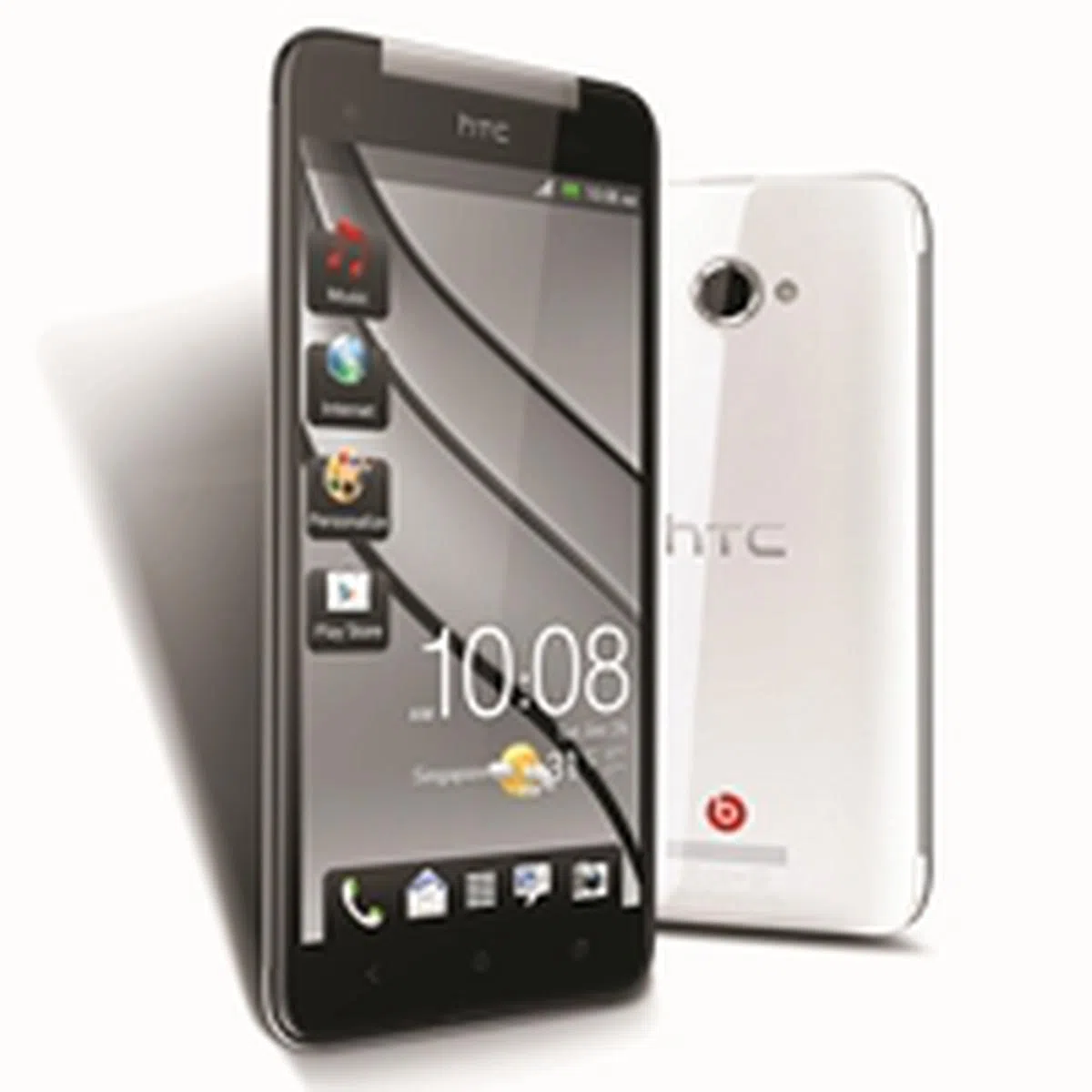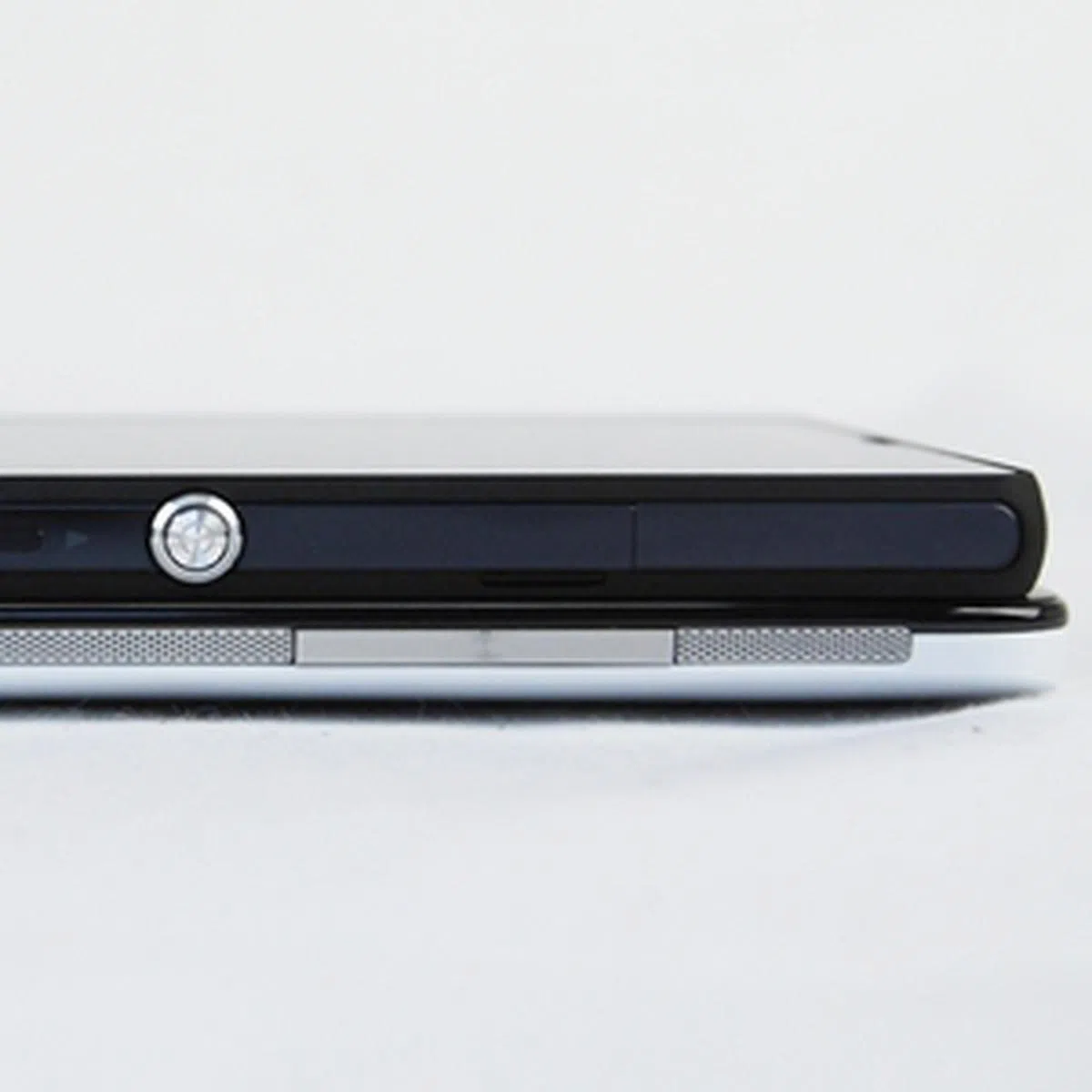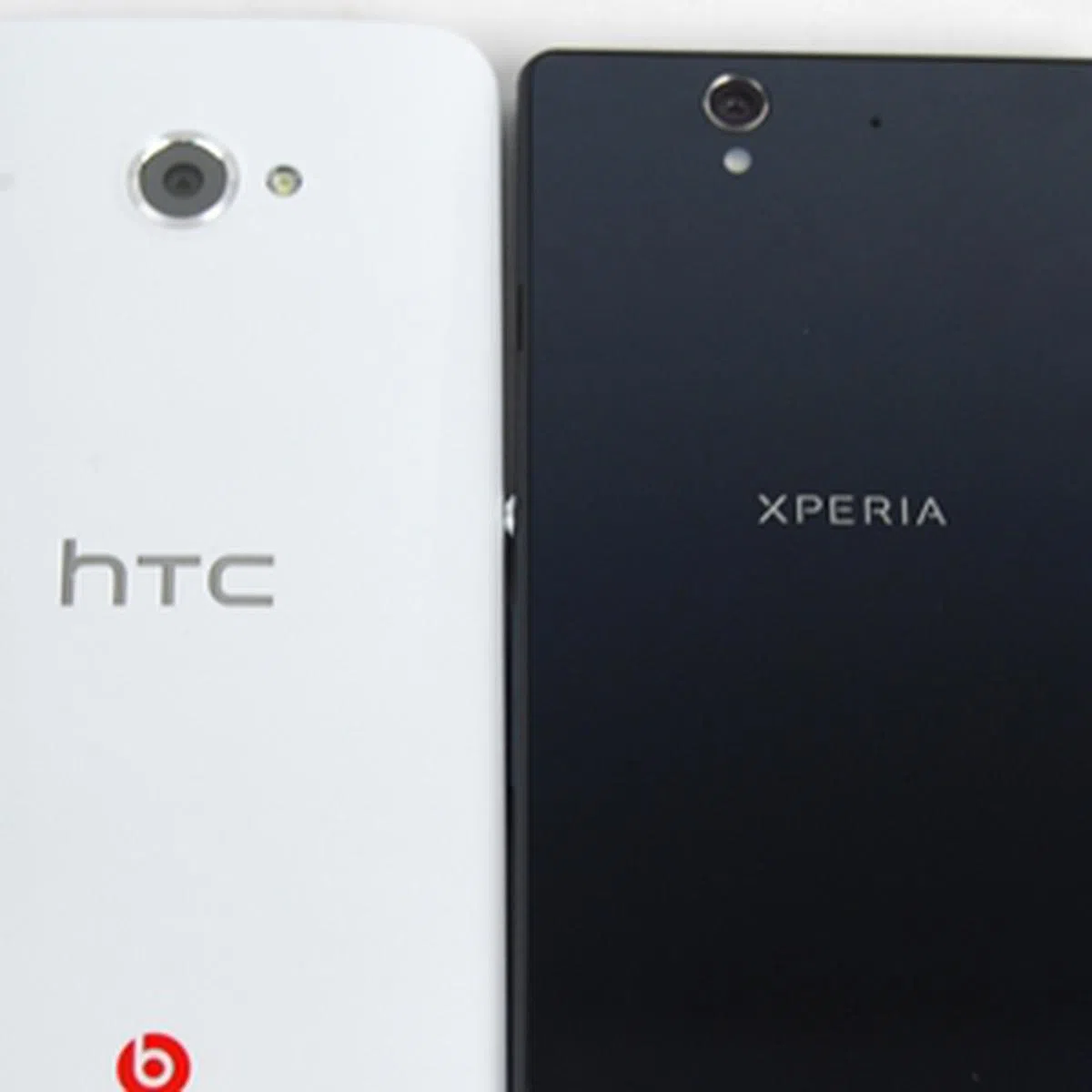HTC Butterfly - HTC's Pretty 5-inch Full HD Smartphone
The HTC Butterfly is the first 5-inch Full-HD smartphone from the Taiwanese company. Equipped with the latest display technologies, processor and the speedy Android 4.1 Jelly Bean OS, where does the HTC Butterfly stand in the increasingly competitive mobile scene? Let's find out.
By HardwareZone Team -
Overview
When HTC launched the J Butterfly in Japan last October, the rest of the world watched with envious eyes as the Japanese laid their hands on the new HTC flagship phone. As a Japan-specific model, it initally seemed that the J Butterfly would not make it anywhere else beyond Japan's shores.
Days later, leaked images of a US variant of the J Butterfly were posted online which sparked off speculation that the J Butterfly (or its variants) would eventually make it to major markets around the world. On 7th December 2012, HTC quietly launched the international variant, the Butterfly for the global market. Unlike its US and Japanese counterparts, the Butterfly does not come with 4G LTE capability. On the other hand, the Butterfly has a microSD card slot, which is absent on the other two variants.
The J Butterfly has proven to be a massive hit among the Japanese, and HTC had to ramp up shipments to the country to meet the strong demand. As a result, our enthusiasm for the Butterfly grew and after a seemingly "long" wait, the HTC Butterfly finally made it to our sunny shores.
We bet a lot of questions are on your mind. Is the HTC Butterfly a better phone than the One X+? How does it fare against the Samsung Galaxy S III? Should you wait for the rest of the 5-inch phones that were announced at CES 2013 (1) (2) (3) to launch before making a decision? Well, you will find out shortly in our review. Before you start, here's a quick look at the specs of the HTC Butterfly: -
 | Key highlights of the HTCButterfly
|
Design
The Butterfly takes on a different design language with a plastic chassis instead of the signature polycarbonate unibody construction found in the One X/XL/X+. For its choice of material, we feel that polycarbonate could have been a better choice given its fine balance of durability, looks and weight. Nonetheless, the Butterfly is still a very well-built device.

Does this picture remind you of another fruity phone? The HTC Butterfly (left) is just slightly longer and wider than the One X (right).
It is obvious that some thorough consideration had gone into the design of the Butterfly so as to make it as ergonomic as possible. For example, the Butterfly inherits the unique design trait of its Windows Phone 8 (WP8) siblings, the WP8X and WP8S - a slightly tapered back. Coupled with a soft plastic feel, the contoured sides make the Butterfly feel extremely comfortable in our hands.

The 8-megapixel rear camera on the HTC Butterfly (left) remains flushed with the chassis, unlike the protruding rear camera on the HTC One X (right).
Another distinct design element is the metallic piece at the top centre of the device. While it serves no functional purpose, we feel that it is deliberately integrated into the design so as to differentiate the Butterfly from the sea of black or white slab-style devices. Both sides of the Butterfly sport perforated metal strips, which we initially mistook for the phone's speakers. Later, we found out that the perforated metal strips are inspired from the design of sports cars. Again, they enhance the overall aesthetics of the Butterfly, and nothing else.

The perforated metal strips along the sides of the HTC Butterfly serve no functional purpose other than to give the phone a more premium feel.
If you are observant enough, you might have noticed something to the left of the camera lens on the back. HTC has added a second notification light (the first is found on the far right of speaker grille at the front) on the back of the Butterfly. Whether the Butterfly is placed face down or face up, you will still be alerted of any notifications.

Kudos to the HTC team for adding a second notification light on the back of the Butterfly.
While we're generally pleased with the refreshed design of the Butterfly, it is unfortunate that HTC ignored one crucial usability aspect of a big screen phone. As mentioned in our hands on with the Xperia Z, we appreciate the fact that Sony has placed the Power button on the right side of the device. This makes it very convenient to access the button as you don't need to stretch your finger or hand to reach the top.

From left to right: microSIM + microSD card slot, Power button and 3.5mm audio output jack on the top profile of the device. Do take note that you have to use a pin to eject the SIM card slot.
For the Butterfly, the situation is made worse as the Power button is located at the top centre of the device. While it is still acceptable on 4.7-inch devices, it is not user friendly anymore once it hits the 5-inch display size. ASUS, LG and Samsung have figured this out on the PadFone2, the Nexus 4, Galaxy S III and Galaxy Note II, and HTC needs to take note of this.
In case you are wondering why the micro-USB port, microSD and micro-SIM card slots are all covered, the Butterfly is rated for IPX-5 waterproof standard. The digit after the "IPX" refers to the degree of protection. A higher number means the device is better protected from water. According the link, the Butterfly is protected against low pressure water stream from any angle.
This explains the difficulties in removing the plastic covers of the port and card slot. Considering that the process of removing the plastic cover requires some effort and time, it makes charging the Butterfly a troublesome affair. On a positive note, the Butterfly is more than able to withstand the accidental water splashes or spills on it.
The HTC Butterfly is more than capable of holding its own when compared to the Sony Xperia Z in terms of design, feel and handling. Having handled both devices, the Butterfly reminds us of the iPhone 5 as it sports a longer frame, whereas the Xperia Z feels and looks wider. Usability wise, we had no problems slipping the Butterfly into our jeans pocket. It doesn't feel as overwhelming as the Samsung Galaxy Note II, but users with smaller hands may still find the Butterfly a tad challenging to use.
[hwzcompare]
[products=365679,367090]
[width=250]
[caption=Comparing the HTC Butterfly against the Sony Xperia Z]
[showprices=0]
[/hwzcompare]

Both the HTC Butterfly and Sony Xperia Z are arguably the most anticipated 5-inch phones at the moment.
 |  |
Features
The Butterfly runs on Android 4.1.1 Jelly Bean and Sense 4+, which is a similar software package that we've seen on the One X+. The One X and One XL devices should have received the over-the-air update by now to be on the same page as the Butterfly.
Most of the features in Sense 4+ have been discussed in our review of the One X+. Here's a quick recap of the new features in Android 4.1 and Sense 4+:
- Expandable notifications
- Redesigned virtual keyboard
- Revamped Gallery app
- Enhanced camera interface
- Power Saver mode
- HTC Get Started
- Sightseeing mode
- No lock screen style
There is an exclusive widget that is only found on the Butterfly - the App & Shortcut. According to a local HTC spokesperson, the widget is not a standard feature of Sense 4+ and just an element of the user interface on the Butterfly.

Want quicker access to your most commonly used apps? Use the App & Shortcut widget!
As the name suggests, the widget allows you to place four apps or shortcuts on a home screen panel for quicker access. You can fit up to four of this widget on a home screen. Unfortunately, you cannot resize or change its orientation.
Performance
The HTC Butterfly is part of a growing group of smartphones that are powered by Qualcomm Snapdragon S4 Pro quad-core processors. Earlier in November, there were only three devices that run on that particular processor. They are the LG Optimus G, ASUS PadFone 2 and LG Nexus 4. Today, there are three new members which are the HTC Butterfly, Sony Xperia Z and ZTE Grand S.
This sets the stage for an epic battle between these devices since they are more or less similarly spec'ed. To find out how the Butterfly stands among its peers, we use the Quadrant benchmark which evaluates the CPU, memory, I/O and 3D graphics of Android devices. In this comparison, we put the Butterfly up against the 5-inch LG Optimus Vu, LG Nexus 4, ASUS PadFone 2, Samsung Galaxy S III LTE and HTC One X+.
Device | HTC Butterfly | LG Optimus Vu | LG Nexus 4 | ASUS PadFone 2 | Samsung Galaxy S III LTE | HTC One X+ |
CPU | Qualcomm Snapdragon S4
quad-core 1.5GHz | Nvidia Tegra 3 quad-core 1.5GHz | Qualcomm Snapdragon S4
quad-core 1.5GHz | Qualcomm Snapdragon S4
quad-core 1.5GHz | Exynos 4212 Quad
quad-core 1.4GHz | NVIDIA Tegra 3 quad-core 1.7GHz |
GPU | Adreno 320 | 12-core GeForce | Adreno 320 | Adreno 320 | Mali-400MP | 12-core GeForce |
RAM | 2GB | 1GB | 2GB | 2GB | 2GB | 1GB |
OS | Android 4.1 | Android 4.0 | Android 4.2 | Android 4.0.4 | Android 4.1 | Android 4.1 |

Riding on the momentum built up by the One X+, the Butterfly scored another victory over the competition in the Quadrant benchmark. The NVIDIA Tegra 3 quad-core 1.5GHz processor in the LG Optimus Vu simply could not match up to the Qualcomm Snapdragon S4 Pro processor, as seen in the chart toppling scores of the ASUS PadFone 2, HTC One X+ and the HTC Butterfly. The LG Nexus 4 is an exception as Android 4.2 may not be optimized for the Quadrant benchmark.
Number crunching aside, we are fairly impressed by the speed of operation on the Butterfly. A combination of Android 4.1 Jelly Bean, Qualcomm Snapdragon S4 Pro quad-core processor and HTC's optimization probably contributed to the Butterfly's newly found speed and agility. Apps load quickly and the interface is impressively responsive. Although it still lags a tad behind the LG Nexus 4, it is still a commendable job done by HTC.
Multimedia Performance
When we reviewed the HTC One X last April, we were very impressed by its 4.7-inch Super LCD 2 display due to the implementation of optical lamination and accurate color reproduction. The Butterfly comes with a 5-inch Super LCD 3 display, which theoretically should offer a better viewing experience. In reality, does it?
Well, the Butterfly did blow our minds away with the level of sharpness on its display. Color reproduction is also slightly more accurate than what we saw on the HTC One X+. Whether you are reading or watching movies on the Butterfly, the display will not disappoint. Having handled the Sony Xperia Z, we could say both displays are ranked as the top mobile screens today. As we do not have a review unit of the Xperia Z, we will leave the screen comparison to a future review article.

From left to right: Apple iPhone 5 (4-inch), HTC One X+ (4.7-inch), HTC Butterfly (5-inch) and Samsung Galaxy Note II (5.5-inch).
One common complaint about the high-end HTC devices last year is the lack of a memory card slot. For example, the HTC One X only has 32GB internal storage. While it is more than sufficient for mainstream users, power users may actually need more. Even though HTC addressed the issue with the 64GB One X+, nothing beats having a memory card slot.
Fortunately, HTC included a microSD card slot for the Butterfly, which is absent on the U.S variant. Like many of the HTC devices launched in 2012, the Butterfly comes with 25GB free Dropbox cloud storage (inclusive of the 2GB free storage when you sign up for a free Dropbox account).
Imaging Performance
The Butterfly is equipped with an 8-megapixel rear camera with f/2.0 aperture, 28mm wide angle lens and BSI sensor. As for the 2.1-megapixel front-facing camera, it is capable of capturing wide-angle self portraits and group shots of up to four individuals.

The HTC Butterfly takes photos of decent image quality. As you can see, the colors are slightly washed out. Close-up crops are found below.
Battery Mileage
Our standard battery test for mobile phones includes the following parameters:
- Looping a 800 x 480-pixel video with screen brightness and volume at 100%
- Wi-Fi and Bluetooth connectivity turned on
- Constant data streaming through email and Twitter
Specifications/Device | HTC Butterfly | LG Optimus Vu | LG Nexus 4 | ASUS PadFone 2 | Samsung Galaxy S III LTE | HTC One X+ |
Processor |
|
|
|
|
|
|
Display Size |
|
|
|
|
|
|
Display Type |
|
|
|
|
|
|
Display Resolution |
|
|
|
|
|
|
Dimensions |
|
|
|
|
|
|
Weight |
|
|
|
|
|
|
Battery |
|
|
|
|
|
|



Armed with a Full-HD display and quad-core processor, we were worried that the Butterfly could not fare too well in our standard battery test. After all, HTC phones are known for their higher-than-average power consumption and shorter battery mileages.The results of the battery test proved that our worries were unfounded.
As you can see, the Butterfly did not fare too badly by clocking a decent battery uptime of 6 hours and 11 minutes. Although it is a far cry from the ASUS PadFone 2, one has to take into account the smaller screen and slightly bigger battery capacity of the PadFone 2. Moreover, the HTC Butterfly actually fared better than its 5-inch counterpart, the LG Optimus Vu.
It is natural that a larger, higher resolution display will only draw more power and we cannot fault the Butterfly for having the second highest power consumption among the competition. We will only know if HTC has made significant improvements in the power management of its devices when we review the other 5-inch devices with full HD resolution based screens that are going to be launched in the coming months. Based on the current circumstances, we can see that HTC did a better job in this aspect than LG.
Due to its physical dimensions and weight, the Butterfly ranked among the last in the Portability Index where each device is assessed on its ability to balance battery mileage. with its size and portability. Once again, we reserve our judgement on the Butterfly until we have reviewed other newer devices of similar class.
During normal usage conditions like texting, browsing the internet and making some calls, the Butterfly could last through a day comfortably. Like what we've mentioned in our review of the One X+, enabling the Power Saver Mode will help squeeze out extra battery mileage from the device.
Conclusion
Do we recommend the HTC Butterfly? Yes, we do wholeheartedly. HTC hits a home run with the Butterfly as it has good industrial design, solid build quality, a stunning 5-inch display and delivers an overall good performance.
Like the HTC One X+, we do not comprehend the rationale behind HTC's decision to not include 4G LTE connectivity on the Butterfly. With the market leader, Samsung, launching LTE variants of the Galaxy S III and Note II, HTC cannot afford to cede more market share by ignoring the growing LTE user group. Perhaps HTC is "saving the best for the last" with its upcoming M7 flagship device.
The HTC Butterfly is reasonably priced at S$928 without line contract from 26 January at M1, StarHub and authorized resellers. If you are deciding between the HTC Butterfly and S$868 One X+, there is no qualms about it - go for the Butterfly. An additional S$60 will get you a screen that is superior in size and quality, a memory card slot and a different design from the One X family.
For people who find the S$998 Samsung Galaxy Note II to be a little too big for their liking, the Butterfly strikes a delicate balance between size and usability. While the Galaxy Note II offers better battery life, innovative software features and a bigger screen, the Butterfly offers a better quality display in a lighter and easier to handle chassis.
One of the most hotly debated issues in the forums is whether the HTC Butterfly or the Sony Xperia Z constitutes a better buy. On paper, the Xperia Z boasts an equally attractive package with superior specs such as a 13-megapixel rear camera, 4G LTE connectivity, water and dust resistance, thinner chassis, a larger battery capacity and a refreshing design.
If we put ourselves in your shoes as a consumer, we reckon the purchase decision to be a tough call as well. The Xperia Z will be available locally in Q1 2013. For now, we recommend exercising some patience before making your decision if you are not in a rush to get a new phone.

The HTC Butterfly is one of the best smartphones we've come across so far. It remains to be seen if the impending arrival of other 5-inch devices will overshadow the HTC Butterfly.
Our articles may contain affiliate links. If you buy through these links, we may earn a small commission.
